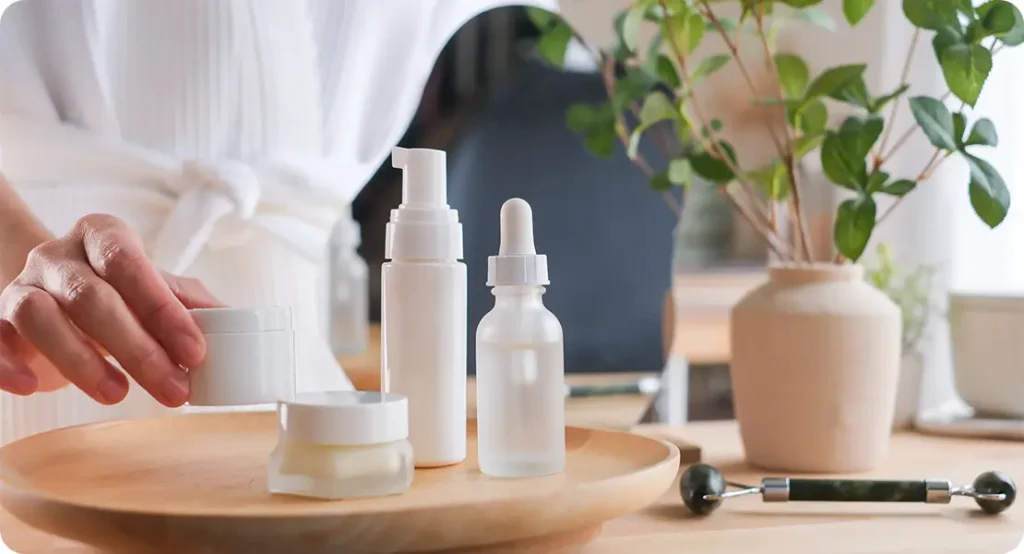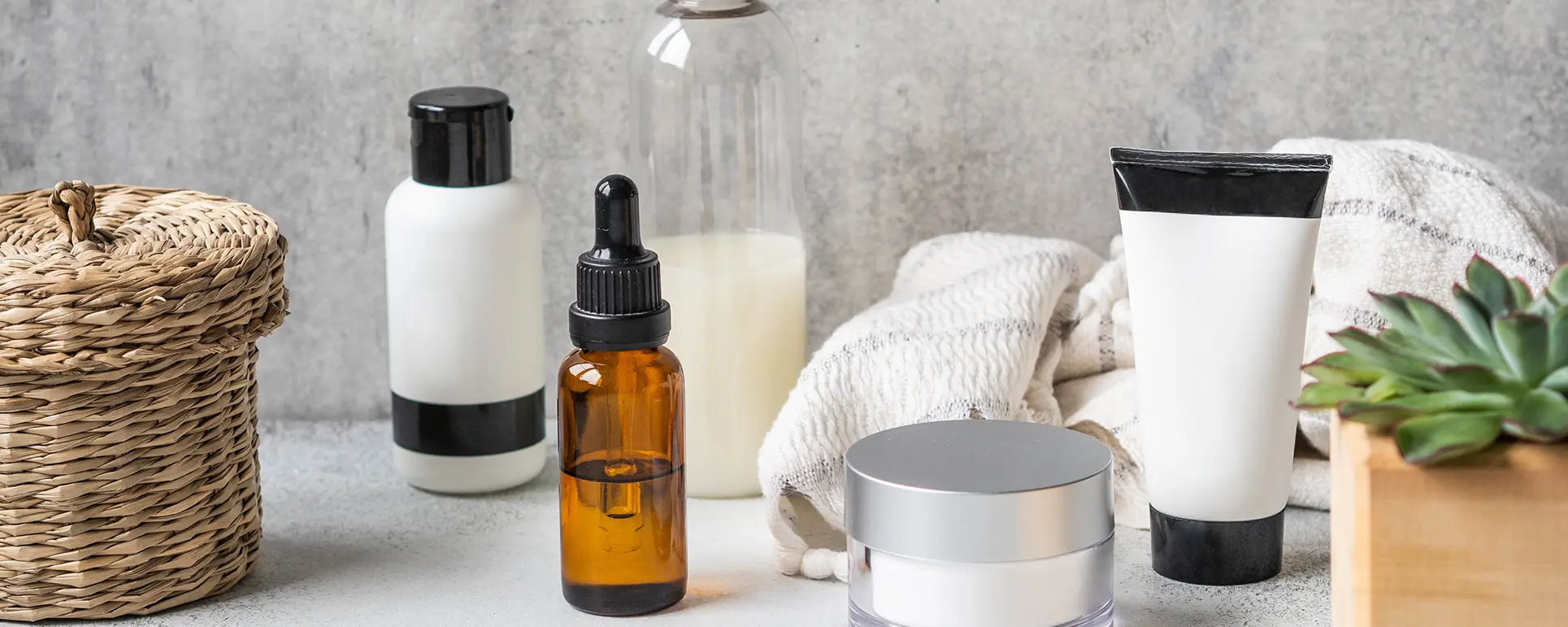Pigmentation issues are one of the most common skin concerns, and they can be incredibly persistent. Whether it’s dark spots left behind by acne, sun-induced freckles, or patches of melasma, uneven skin tone is often difficult to treat and slow to improve. Understandably, many of us turn to skincare products that promise brightening, fading, or correcting results. But here’s the surprising part sometimes, the very products we use with good intentions might actually be making pigmentation worse.
It might sound counterintuitive. After all, skincare is supposed to help, not harm. Yet pigmentation is a complex issue, and certain ingredients, incorrect usage, or even the way products are layered together can unintentionally aggravate the problem. For example, exfoliating acids and retinoids are powerful tools for fading dark marks, but when overused or combined without care, they can damage the skin’s natural barrier. A weakened barrier makes your skin more sensitive to irritation and inflammation, which in turn can trigger even more pigmentation.
Another common mistake is skipping daily sunscreen. No matter how expensive or advanced your serums are, without consistent UV protection, you’re fighting a losing battle. Ingredients like vitamin C or hydroquinone may lighten pigmentation, but they also make the skin more sensitive to sunlight. If you apply them without proper SPF coverage, you may see your dark spots deepen rather than fade.
Even seemingly harmless habits such as mixing too many “brightening” products at once, or neglecting to moisturise properly can cause subtle but chronic irritation. Over time, this irritation leads to inflammation, and inflammation is one of the biggest drivers of hyperpigmentation. In other words, it’s not always about the strength of the products but about balance, consistency, and understanding what your skin really needs.
The good news is that once you identify which products are truly helpful and which may be sabotaging your progress, you can take back control. With the right routine and approach, pigmentation can absolutely be managed and improved. It’s less about using every trending ingredient and more about building a thoughtful, protective, and supportive skincare plan that works with your skin instead of against it.
In the sections that follow, we’ll look more closely at the ingredients most likely to worsen pigmentation when misused, the warning signs that your skincare might be backfiring, and practical changes you can make to see better results.
1. Ingredients That Can Trigger Pigmentation

Not all skincare ingredients are created equal when it comes to managing pigmentation. While some are proven to help fade dark spots and even out tone, others can backfire if used incorrectly or in some cases, are simply unsuitable for certain skin types. If you’ve noticed your pigmentation worsening despite following a skincare routine, some of the ingredients below could be the culprits.
Harsh acids or exfoliants
Exfoliating acids like glycolic acid, lactic acid, and salicylic acid are widely praised for their ability to resurface the skin and fade discolouration. However, when overused or applied in strong concentrations without guidance, they can lead to over-exfoliation. This strips away the protective skin barrier, leaving your skin inflamed, sensitive, and vulnerable to UV damage. Inflammation is one of the biggest triggers for melanin production, which means that instead of lightening pigmentation, aggressive exfoliation may actually make dark patches more noticeable.
Fragrances and essential oils
Fragrances are often added to skincare products to create a pleasant scent, but they can be a hidden source of irritation. Synthetic fragrances, as well as certain essential oils like bergamot, citrus, and lavender, can cause contact dermatitis or photosensitivity in sensitive individuals. When your skin becomes more reactive to sunlight because of these ingredients, the result can be worsening pigmentation, especially in the form of sunspots or post-inflammatory hyperpigmentation. The problem is that fragrance doesn’t always appear obvious on labels sometimes it’s listed under vague terms like “parfum” or “aroma,” which makes it easy to overlook.
Alcohol-heavy toners
Toners formulated with high amounts of alcohol can leave your skin feeling tight and “squeaky clean” at first, but this drying effect is actually a sign of barrier disruption. When your skin becomes dehydrated, it tries to compensate by producing more oil and, in some cases, more pigment. Over time, this can lead to uneven tone and make existing dark spots appear more pronounced. While not all forms of alcohol in skincare are harmful fatty alcohols like cetyl or stearyl alcohol can be beneficial denatured alcohol and ethanol-based formulas are the ones most likely to cause issues with pigmentation.
Photosensitising plant extracts
In addition to essential oils, certain natural plant extracts, such as citrus-derived ingredients (like lemon or grapefruit extract), can make skin more sensitive to sunlight. Many people turn to “DIY” remedies such as lemon juice for brightening, but this often has the opposite effect. When exposed to UV rays, these ingredients can trigger phototoxic reactions that leave behind stubborn dark marks.
Inappropriate use of skin-lightening agents
Even ingredients meant to treat pigmentation such as hydroquinone can worsen the problem if used incorrectly. Prolonged or unsupervised use may lead to rebound hyperpigmentation, where the skin develops even darker patches. This is why dermatologists usually recommend cycling such treatments or combining them with barrier-supportive ingredients and strict sun protection.
2. Overuse or Incorrect Combination of Products

In skincare, more isn’t always better. It’s easy to assume that piling on multiple active ingredients will speed up results, especially when dealing with stubborn pigmentation. But using too many potent products at once or combining them incorrectly can end up harming your skin instead of helping it.
The problem with layering actives
Ingredients like retinoids, exfoliating acids, and vitamin C are all popular choices for targeting dark spots. On their own and when used correctly, they can be highly effective. However, when these ingredients are layered together without guidance, the risk of irritation skyrockets. For example, applying a retinoid alongside glycolic acid in the same routine can overwhelm your skin, leading to redness, peeling, and inflammation. This inflammation often triggers excess melanin production, which can make pigmentation worse over time.
Skin barrier damage
The skin barrier plays a vital role in keeping irritants out and retaining hydration. When you overload it with harsh combinations, the barrier becomes compromised. A weakened barrier means your skin is less able to defend itself against UV rays, pollution, and even the natural stressors of daily life. The result is heightened sensitivity and, in many cases, a flare-up of post-inflammatory hyperpigmentation. In other words, the harsher your routine, the more your skin fights back with dark spots.
Duplication without realising
Another common mistake is accidentally using the same active ingredient in multiple products without noticing. For instance, you may have a cleanser with salicylic acid, a serum with lactic acid, and a toner with glycolic acid all in the same routine. While each product might not seem overly strong on its own, combined they deliver a much higher concentration than your skin can handle. This “double dosing” effect is a common cause of irritation-driven pigmentation.
The myth of faster results
Many people fall into the trap of thinking that if a product stings, tingles, or causes visible peeling, it must be working faster. In reality, irritation does not equal effectiveness. Progress with pigmentation is almost always slow and requires patience. Trying to rush the process with aggressive combinations usually backfires, leaving skin worse off than when you started.
A balanced approach
The key is to introduce active ingredients gradually and avoid pairing too many strong products together in the same routine. For example, if you’re using a retinoid at night, it’s best not to combine it with an alpha-hydroxy acid exfoliant on the same evening. Instead, alternate them across different days or routines, giving your skin time to adjust and repair. Supporting actives like niacinamide, panthenol, or ceramides can also help strengthen the skin barrier, reducing the risk of pigmentation flare-ups.
3. Lack of Sun Protection
Even if you’re using the most advanced skincare products on the market, skipping sunscreen can undo all of your hard work. Sun exposure is the single biggest trigger for hyperpigmentation. Whether it’s freckles, sunspots, or melasma, ultraviolet (UV) radiation stimulates melanin production, which means unprotected skin will almost always show more pigmentation over time.
Why sunscreen matters for pigmentation
When UV rays hit the skin, they cause microscopic damage that the body tries to repair by producing more pigment as a protective response. This is why tanning is essentially a sign of skin damage. For people already prone to pigmentation, every bit of unprotected sun exposure deepens existing dark spots and makes new ones more likely to appear. Even short bursts like walking to the shop, sitting by a window, or driving can add up and contribute to worsening discolouration.
The false sense of security
A common mistake people make is relying on their skincare actives such as vitamin C, retinoids, or exfoliating acids to treat pigmentation while forgetting that these same ingredients can make the skin more sensitive to sunlight. Without sunscreen, the skin becomes vulnerable to further damage, which not only stalls progress but can actually reverse it. Essentially, your brightening serum and your SPF should be seen as a team. One works to fade pigmentation, while the other prevents new pigmentation from forming.
Broad-spectrum is key
Not all sunscreens are created equal. It’s important to use a broad-spectrum SPF of at least 30, ideally 50, to ensure protection against both UVA and UVB rays. UVA rays penetrate deeply and accelerate skin ageing, while UVB rays cause burns both contribute to pigmentation. Skipping broad-spectrum coverage is like fixing only half the problem.
Consistency over occasion
Another misconception is that sunscreen is only needed on sunny holidays or outdoor days. In reality, UV rays are present year-round, even on cloudy or rainy days, and they can pass through glass windows. That means daily use is non-negotiable if you’re serious about improving pigmentation. The consistency of sunscreen use often makes the biggest difference in long-term results.
Finding the right formula
Some people avoid sunscreen because they dislike the texture or feel it causes breakouts. Fortunately, modern formulations come in a wide range of options from lightweight gels to tinted creams that suit different skin types. Choosing one that you enjoy applying makes it far easier to stick to daily use, which ultimately protects your progress.
In short, sunscreen is not just an “extra” in your routine it’s the foundation that holds everything else together. Without it, even the best brightening treatments will struggle to make a lasting impact.
4. Early Warning Signs Your Routine is Backfiring
Skincare is supposed to improve your complexion, not make it worse. But when products are too harsh, layered incorrectly, or used without proper support, they can end up doing more harm than good. If your goal is to reduce pigmentation, it’s important to pay attention to how your skin responds on a day-to-day basis. Subtle signs of irritation or imbalance often appear before pigmentation becomes noticeably worse. Here are some red flags to look out for:
Redness or stinging after application
A little tingling when you first start using an active ingredient such as a retinoid or exfoliating acid can be normal, especially while your skin is adjusting. However, persistent burning, stinging, or visible redness is a sign that the product may be too strong or is being used too frequently. Irritation triggers inflammation, and inflammation is one of the main causes of post-inflammatory hyperpigmentation. In short, if your skin looks angry after applying a product, it’s likely not helping your pigmentation concerns.
Increased sensitivity or dryness
When the skin barrier becomes compromised, it struggles to hold on to moisture and protect itself from external irritants. This often shows up as tightness, flakiness, or sensitivity to products that never bothered you before. A dry, weakened barrier makes your skin more vulnerable to UV damage and inflammation two of the biggest contributors to pigmentation. If your once-hydrated skin suddenly feels parched, your routine may be too harsh.
Darker spots or new patches appearing
Perhaps the clearest warning sign is noticing that your existing dark spots are getting deeper in colour, or that entirely new areas of pigmentation are forming. This often happens when active ingredients are overused without sunscreen, or when irritating products trigger inflammation. Instead of fading, pigmentation becomes more entrenched, making it harder to treat in the long run.
Uneven skin tone despite consistent use
If you’ve been diligent with your routine for several weeks or months but see no improvement or worse, your skin tone looks patchier it’s a clue that something in your regimen is counterproductive. Pigmentation treatments typically take time to show results, but you should still notice small signs of progress, such as brighter overall tone or lighter edges on dark marks. If the opposite is happening, it’s worth reassessing your products.
Other signs to watch for
In addition to the above, subtle hints like frequent breakouts, lingering irritation around sensitive areas (such as the eyes or corners of the mouth), or a general dullness in the complexion can also suggest that your routine is backfiring. These issues may not directly cause pigmentation at first but can set the stage for it by weakening the skin’s resilience.
Paying attention to these early warning signs can save you months of frustration. By recognising when your products are doing more harm than good, you can make timely adjustments and prevent pigmentation from worsening.
5. What Dermatologists Recommend

When pigmentation becomes a stubborn problem, turning to a professional is often the best step forward. A dermatologist in London can carefully examine your skin, identify the root causes of your pigmentation, and recommend products and treatments that are both safe and effective for your unique needs. This personalised approach is especially important because not all ingredients work for every skin type, and what improves pigmentation in one person may cause irritation in another.
Gentle, non-irritating cleansers
Cleansing is the foundation of every skincare routine, and dermatologists usually recommend keeping this step as mild as possible. Harsh cleansers that strip away the skin’s natural oils can leave the barrier vulnerable, making pigmentation worse in the long run. Instead, cream or gel-based cleansers that cleanse without drying help maintain balance. A strong skin barrier creates the right conditions for brightening treatments to work effectively.
Targeted brightening ingredients
Dermatologists often guide patients towards evidence-backed brightening agents. Vitamin C, for example, helps fade dark spots while offering antioxidant protection against sun and pollution damage. Niacinamide is another favourite because it reduces the transfer of pigment to skin cells and strengthens the barrier at the same time. Other dermatologist-approved ingredients may include azelaic acid, kojic acid, or tranexamic acid all of which target uneven tone without the risk of over-sensitising the skin when used correctly.
Consistent sun protection
Perhaps the most common advice dermatologists give for pigmentation is the daily use of sunscreen. A broad-spectrum SPF 30 or higher is non-negotiable, even on cloudy days. Without sun protection, any gains from brightening serums or treatments will quickly be undone, as UV rays remain the biggest driver of pigmentation. Many dermatologists also advise reapplying SPF every few hours if you’re spending extended time outdoors, since even the best formulas lose their effectiveness with time and exposure.
Gradual introduction of actives
Strong actives like retinoids and exfoliating acids can transform pigmentation when used properly but they can just as easily cause setbacks if introduced too quickly. That’s why dermatologists recommend starting slowly, perhaps using a retinoid two to three times per week and gradually building tolerance. This approach minimises irritation and ensures that the skin has time to adjust, lowering the risk of rebound pigmentation caused by inflammation.
Professional treatments when needed
For stubborn pigmentation that doesn’t respond to over-the-counter products, dermatologists may suggest in-clinic treatments such as chemical peels, prescription creams, or laser therapies. These are administered with precision and tailored to your skin type, which significantly reduces the chances of side effects. While professional treatments can deliver faster results, they are usually combined with a strong at-home routine for the best long-term outcome.
In short, dermatologists recommend a balanced, patient, and protective approach. By focusing on gentle care, targeted actives, and consistent protection, you can manage pigmentation more effectively and reduce the risk of worsening it with the wrong products.
Final Thought: Taking Control of Your Pigmentation Journey
Pigmentation is a tricky skin concern, and while skincare products can be powerful tools, they can also backfire if not used correctly. Harsh ingredients, poor combinations, and a lack of sun protection are some of the most common reasons pigmentation fails to improve or even gets worse. The good news is that with the right guidance, you can build a routine that works with your skin instead of against it.
If you’ve been struggling to manage dark spots or uneven tone on your own, professional help can make all the difference. You can book a consultation with a dermatologist in London to get tailored advice, safe treatment options, and a routine designed specifically for your skin type. With expert support, your journey towards clearer, more even-toned skin becomes much more achievable.
References:
- Thawabteh, A. M. et al., 2023. Skin Pigmentation Types, Causes and Treatment A Review. [Journal/Platform]. Available at: https://www.ncbi.nlm.nih.gov/pmc/articles/PMC10304091/
- Callender, V. D. et al., 2021. Effects of Topical Retinoids on Acne and Post-inflammatory Hyperpigmentation. Dermatologic Therapy, PMCID: PMC8776661. Available at: https://www.ncbi.nlm.nih.gov/pmc/articles/PMC8776661/
- Nautiyal, A., 2021. Management of hyperpigmentation: Current treatments and emerging therapies. Pigment Cell & Melanoma Research. Available at: https://onlinelibrary.wiley.com/doi/10.1111/pcmr.12986
- Peng, X. et al., 2024. Mechanism, Formulation, and Efficacy Evaluation of Natural Products for Skin Pigmentation Treatment. Pharmaceutics, 16(8): 1022. DOI: 10.3390/pharmaceutics16081022. Available at: https://doi.org/10.3390/pharmaceutics16081022
- Solano, F., 2020. Photoprotection and Skin Pigmentation: Melanin-Related Compounds as UV Filters and Antioxidants. Molecules, 25(7):1537. Available at: https://www.mdpi.com/1420-3049/25/7/1537
